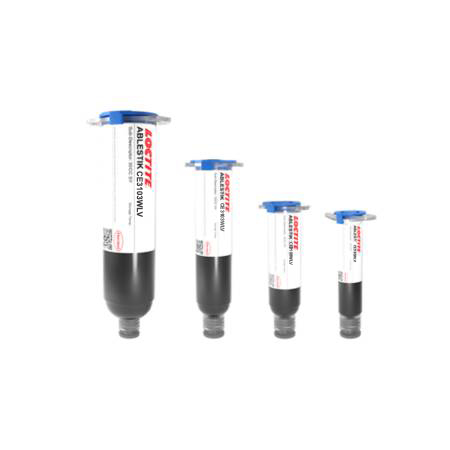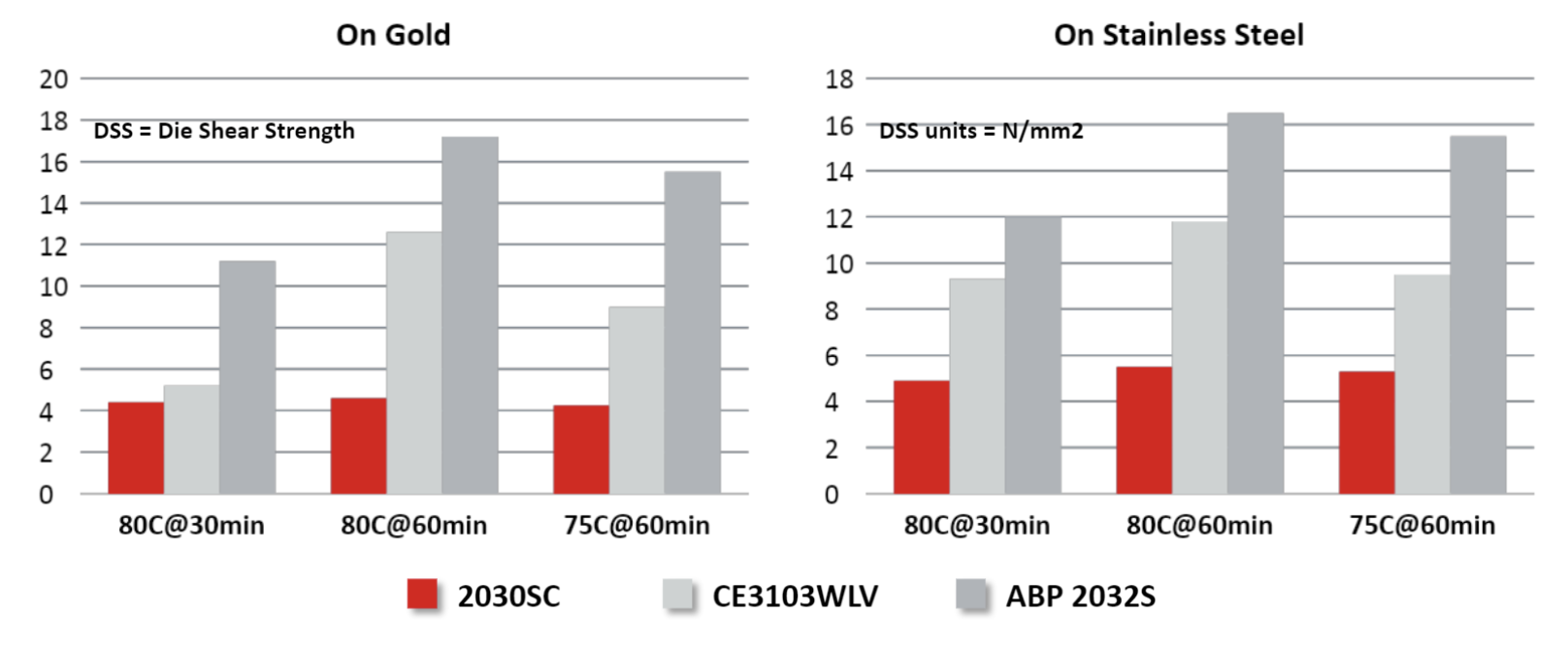LOCTITE ABLESTIK CE3103WLV
Harmonization Code : 3506.91.90.99 | Prepared glues and other prepared adhesives, not elsewhere specified or included; products suitable for use as glues or adhesives, put up for retail sale as glues or adhesives, not exceeding a net weight of 1 kg ; Adhesives based on polymers of headings 3901 to 3913 or on rubber; Other ; Other
Main features
- Pb Free alternative to solder
- Compatible with non noble metals
- Optimized for dispensing
Product Description
LOCTITE® ABLESTIK CE 3103WLV is a rigid, Ag filled, one component electrically conductive epoxy adhesive that is a Lead free / Pb-free alternative to solder. It is compatible with non-noble metals and curable under standard solder reflow profiles.
LOCTITE® ABLESTIK CE 3103WLV can be cured using standard solder reflow profiles. Its low viscosity and anti corrosion technology makes it ideal for dispensing. Its operating temperature is -40 up to 150°C.
LOCTITE® ABLESTIK CE 3103WLV passes NASA outgassing standards and it can be used to bond Sn finished passives and components. Common applications include and are not limited to:
- Bonding of noble passive components onto noble terminated LTCC boards
- Bonding of Sn or AgSn coated Cu ribbon to front contact (TCO) of thin film PV cells
Cure Schedule
- 10min @ 120°C or
- 3min @ 150°C
Technical Specifications
| Thermal Properties | |
| Glass Transition Temperature (Tg) Glass Transition Temperature (Tg) The glass transition temperature for organic adhesives is a temperature region where the polymers change from glassy and brittle to soft and rubbery. Increasing the temperature further continues the softening process as the viscosity drops too. Temperatures between the glass transition temperature and below the decomposition point of the adhesive are the best region for bonding. The glass-transition temperature Tg of a material characterizes the range of temperatures over which this glass transition occurs. | 114 °C |
| Thermal Conductivity Thermal Conductivity Thermal conductivity describes the ability of a material to conduct heat. It is required by power packages in order to dissipate heat and maintain stable electrical performance. Thermal conductivity units are [W/(m K)] in the SI system and [Btu/(hr ft °F)] in the Imperial system. | 1.8 W/m.K |
| Electrical Properties | |
| Volume Resistivity Volume Resistivity Volume resistivity, also called volume resistance, bulk resistance or bulk resistivity is a thickness dependent measurement of the resistivity of a material perpendicular to the plane of the surface. | 8.0x10-4 Ohms⋅cm |
| Physical Properties | |
| Thixotropic index Thixotropic index Thixotropic Index is a ratio of a material s viscosity at two different speeds in Ambient temperature, generally different by a factor of ten. A thixotropic material s viscosity will decrease as agitation or pressure is increased. It indicates the capability of a material to hold its shape. Mayonnaise is a great example of this. It holds its shape very well, but when a shear stress is applied, the material easily spreads. It helps in choosing a material in accordance to the application, dispense method and viscosity of a material. | 5.5 |
| Viscosity Viscosity Viscosity is a measurement of a fluid’s resistance to flow. Viscosity is commonly measured in centiPoise (cP). One cP is defined as the viscosity of water and all other viscosities are derived from this base. MPa is another common unit with a 1:1 conversion to cP. A product like honey would have a much higher viscosity -around 10,000 cPs- compared to water. As a result, honey would flow much slower out of a tipped glass than water would. The viscosity of a material can be decreased with an increase in temperature in order to better suit an application | 20,000 mPa.s |




